Regina Caeli – Queen of Heaven, Rejoice!
The Regina Caeli, Latin for “Queen of Heaven,” is a hymn and prayer ...
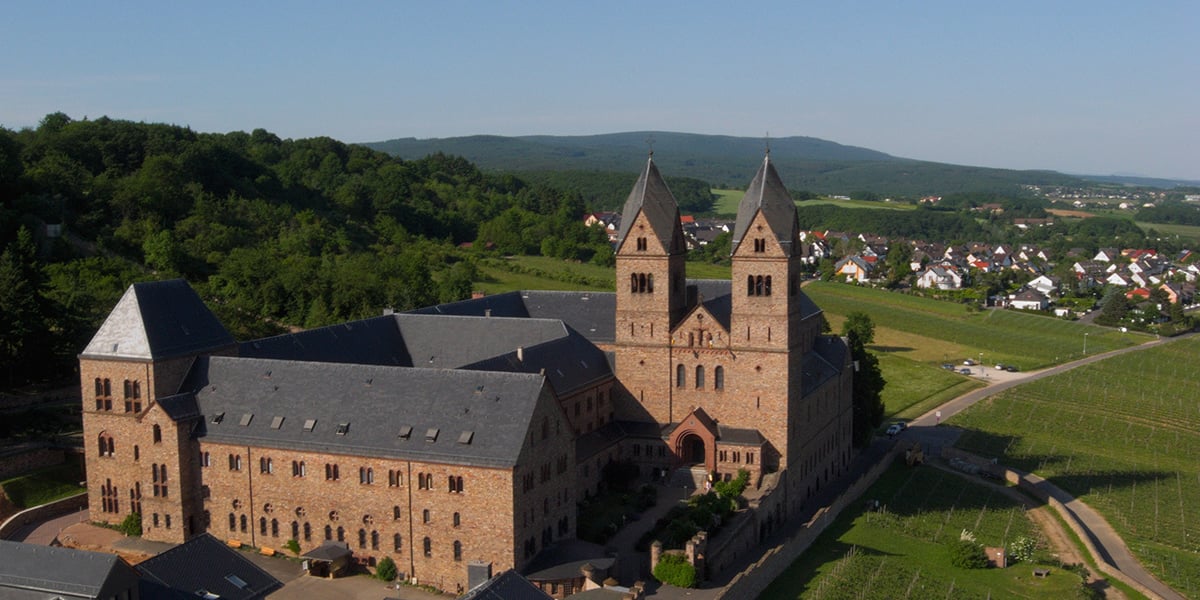
In this 5 minute interview on the Sonrise Morning show, Dr. Italy discusses the amazing life and talents of St. Hildegard of Bingen, the medieval Benedictine abbess renowned for her visions, compositions, and prolific body of written work. Pilgrims on Dr. Italy’s 2023 Rhine Cruise will be visiting her relics and some of her monasteries, particularly the one whose image appears above, located near the German town of Rüdesheim am Rhein.
Born the year before the crusade was proclaimed in 1098 AD, Hildegard was a sickly girl who began to experience visions at the age of 3. Given as an oblate to the Benedictine men’s monastery of St. Disibod at eight years old, she was clothed in the Benedictine habit at the age of fifteen. She was mentored by a noblewoman named Jutta, who founded a community of women connected to the men’s monastery. When Jutta died, Hildegard became their abbess.
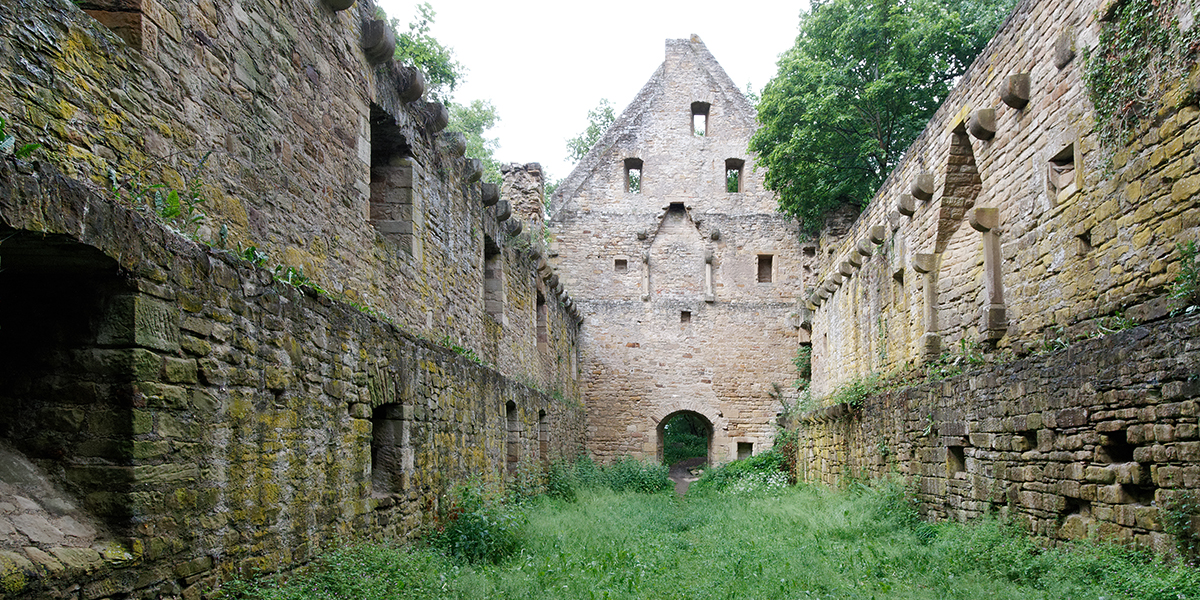
Ruins of Saint Disibod Abbey by E-W. CC 3.0.
God told her to separate from the men’s community and found a new monastery at Rupertsberg, and then, fifteen years later, she founded one at Eibingen. We’ll be visiting these places, and St. Hildegard’s relics, on our 2023 Rhine pilgrimage.
She received continual visions all throughout her life, but in humility declined to write them down until age 40 or so, when she was commanded to do so by the Lord, and that command was confirmed by spiritual directors.
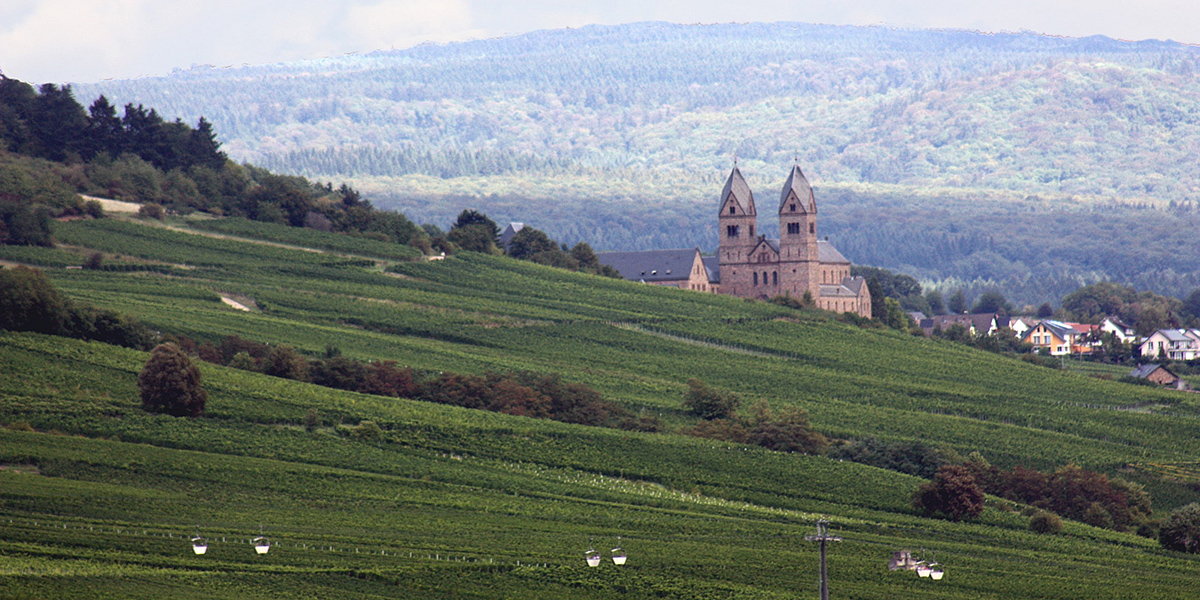
View of Saint Hildegard Abbey of Eibingen, from Castle Klopp, looking down upon Rudesheim, by Dguendel. CC 3.0.
A prolific writer and woman of many gifts, she authored three vast volumes called the Scivias (short for “know the ways of the Lord) of poetic, visionary theology of Creation and Redemption.
She also wrote the oldest surviving morality play – a musical with 62 songs called the Ordo Virtutem, about the battle between virtue and vice.
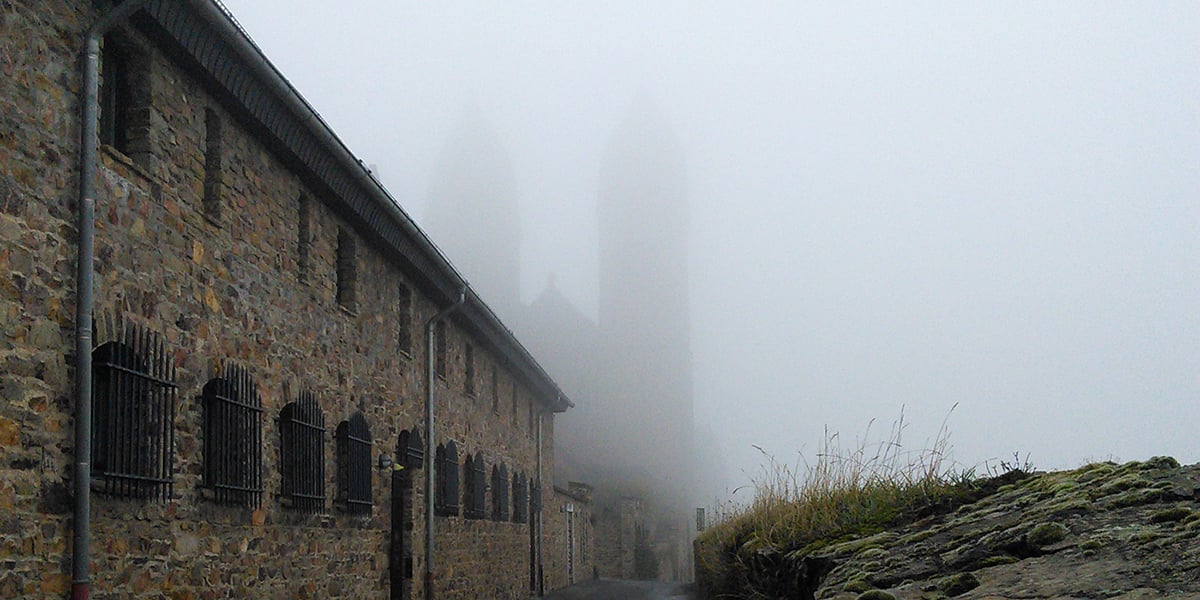
Abbey of Saint Hildegard in fog, Rüdesheim am Rhein, Germany by Maarten Sepp. CC 3.0.
No one from the middle ages wrote more music, both lyrics and melody, that survives and is performed today.
Hers is the most extensive surviving correspondence of the middle ages. She corresponded with Popes, bishops, St. Bernard of Clairvaux, Frederick Barbarossa, King Henry II of England, and many others.
During her life, St. Hildegard made four preaching tours around what is now Germany, speaking to clergy and laity and often denouncing the sins of royalty, nobility & clergy that she witnessed in her time.
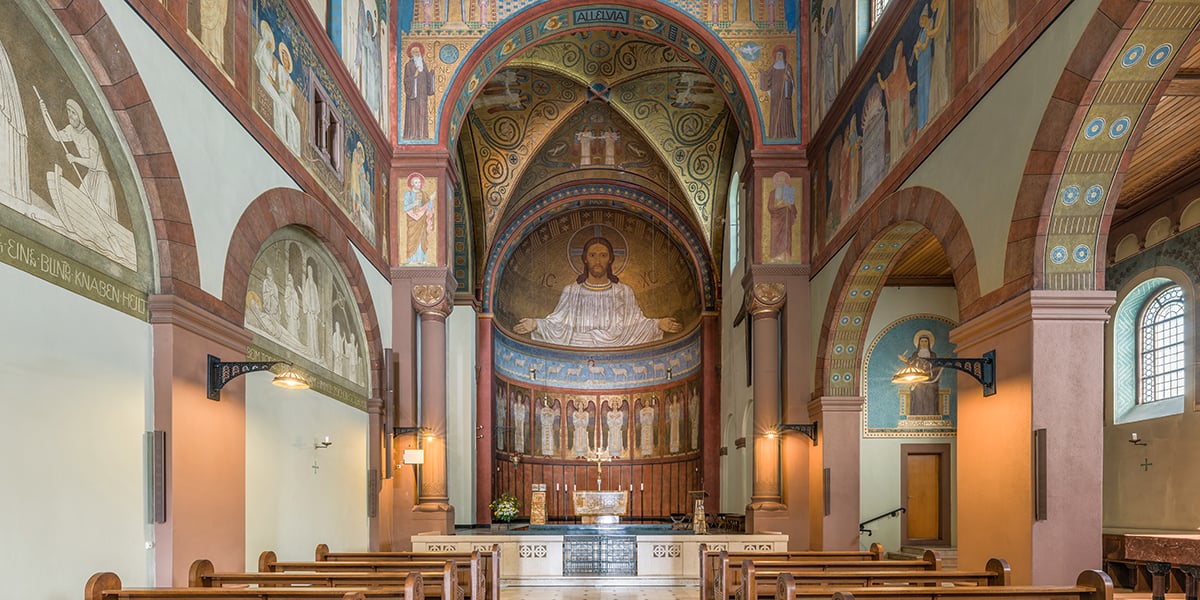
Interior of Eibingen Abbey of Saint Hildegard, Rüdesheim am Rhein, Germany by DXR. CC 4.0.
Since she worked in the monastery infirmary, she wrote extensively on holistic medicine and food. I even own a copy of the Hildegard Cookbook. And if this were not enough, she studied and wrote in the area of the sciences: studies of minerals, animals, plants. Her works contain the first recorded advice to use hops as a preservative in beer.
Though honored as a saint for many centuries, and referred to as such, St. Hildegard was not formally canonized until 2012, when Pope Benedict the XVI made it “official.” Later that same year, Pope Benedict declared her a Doctor of the Church.
Banner/featured image the Abbey of St. Hildegard of Bingen, Rudesheim Germany, by Tiggr. CC 3.0.
No Comments